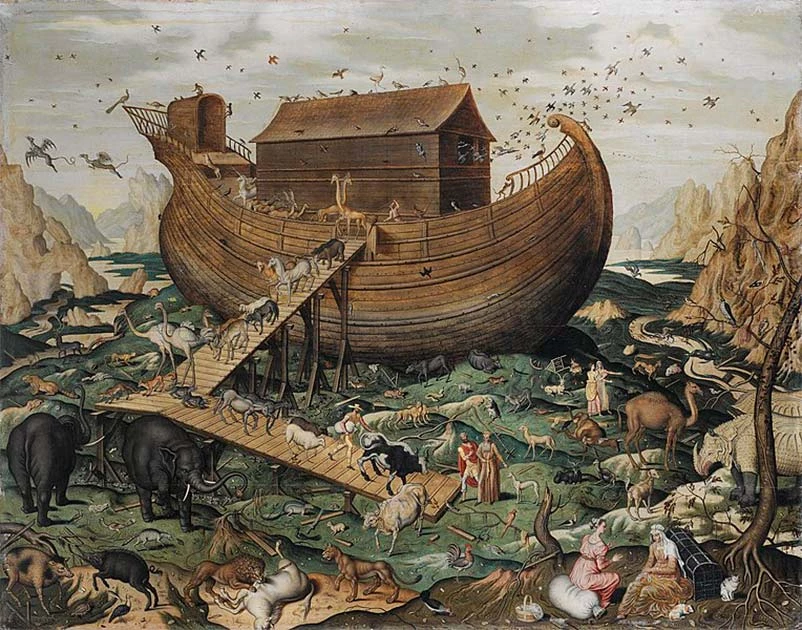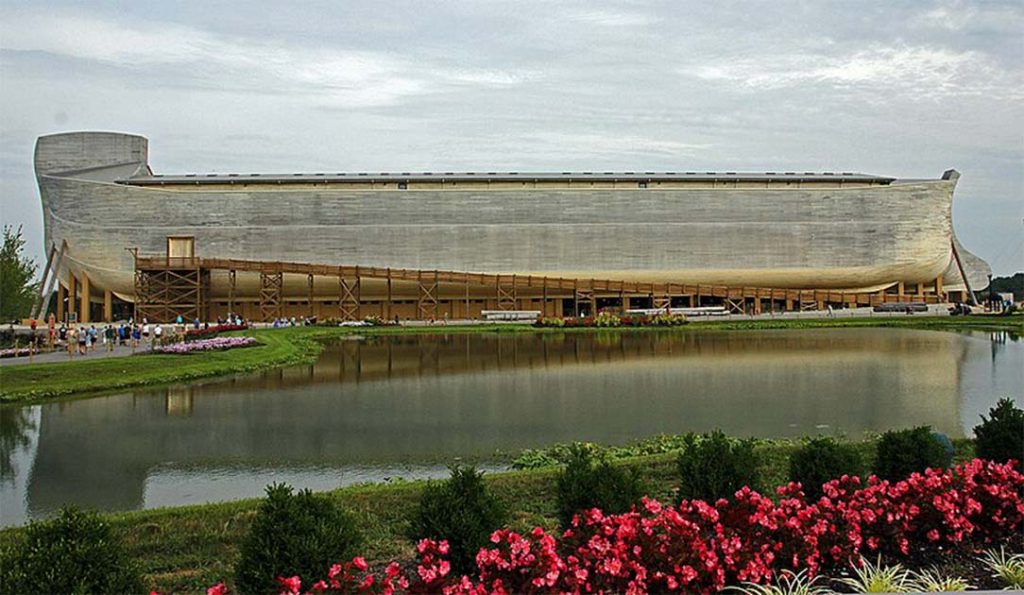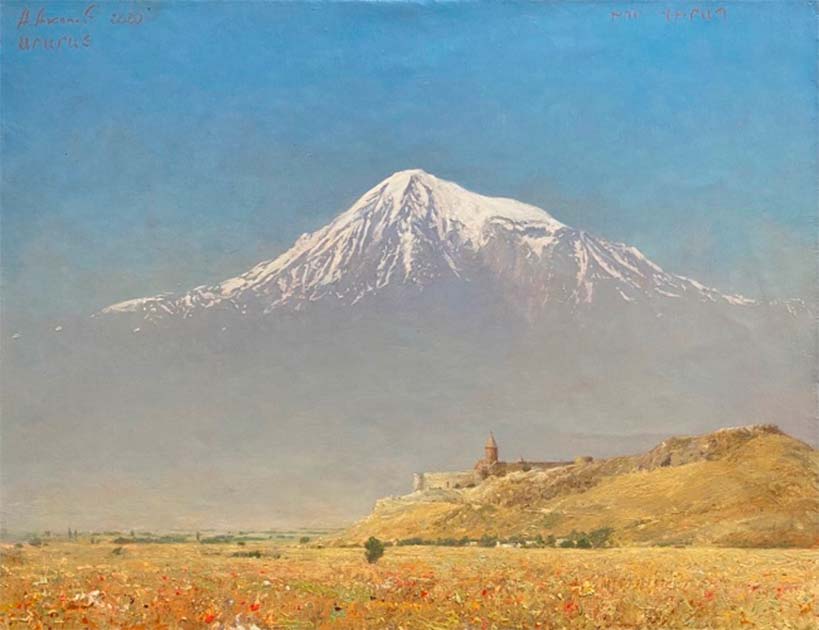Mount Ararat is a snowy topped mountain in the Eastern half of Turkey. It is made up of two volcanic cones that have laid dormant for many years: Greater Ararat and Little Ararat.
Greater Ararat is the highest peak in Turkey and of the Armenian Highland. It is 5,137 m, almost 17,000 feet high, with Little Ararat 3,896 m (12,750 feet). It was first scaled in the Middle Ages and the first confirmed ascent was in 1829 by Friedrich Parrot and Khachatur Abovian.
What we are trying to say is that this is a real mountain. We have climbed it, we have walked all over it, and nothing in all of our exploring seems to have killed off the idea about Ararat that has made it famous. In European history, where the mountain has been named Ararat since at least the Middle Ages, it has been identified as the resting place of Noah’s Ark.
Although right away there are already literally biblical problems with this. According to some traditions of Genesis, there is no referral to Mount Ararat at all. And the mountain itself was identified as Ararat only in medieval times, albeit for plausible geographical reasons.
Even though the mountains lie outside of Modern Armenia, it is the principal national symbol of Armenia. It has been considered a sacred mountain for many years. The mountain features prominently in Armenian literature in art and has become an icon of Armenian nationalism.
A Last Resting Place
According to the Book of Genesis in the Old Testament, Noah’s Ark settled in the Mountains of Ararat. It has been agreed by many historians that the Hebrew name for Ararat was Urartu.

Urartu is the geographical ancestor of Armenia. However, it has been argued that this referred to the area and wider region rather than the mountain itself.
- Great Relic of the Israelites: Where is the Ark of the Covenant?
- Is the Black Sea Flood Noah’s Great Flood?
The name was translated in the fourth-century Latin version of the Bible as the mountains of Armenia in the Vulgate. Regardless, it has been considered the resting place of Noah’s Ark and is considered a biblical mountain.
Mount Ararat has been associated with the Genesis account since the 11th century. It seems it was the Armenians who began to identify the ark’s landing place as a specific peak in these nearby mountains.
Conybeare wrote in the 19th century that the mountain was a center of pagan myths and a focus of cults. It was only in the 11th century that Armenian theologians ventured to the mountains to find Noah’s Ark William of Rubruck an 11th-century traveler and historian is considered to be one of the earliest references for the tradition in European literature.
In the 14th century, John Mandeville was another historian and chronicler who recorded that Mount Ararat was where Noah’s ship rested and confirmed that it was still there. By this point we are looking at a generational conspiracy of cartographical fabulism.
Many Christians identify Mount Ararat as a biblical mountain because it would have been the first peak to have emerged from the waters after the flood. It is where most of modern Western Christianity places the landing of the Ark.
In 1722 a biblical dictionary was created by Austin Calmet, a French Benedictine monk, and in 1871 Jamieson-Fausset-Brown released a Bible commentary that both indicated the mountain was where the ark had landed. An American missionary named H. G. O. Dwight wrote in 1856 that most of Europe believed that the ark’s final resting spot was the mountain.
James Bryce, a British historian, wrote in 1878 that the ark rested in the mountain district known to the Hebrew people as Ararat. He believed this because it was the most majestic summit in Armenia.
Searching for the Truth
Ararat has unsurprisingly been the focus of many searches to find Noah’s Ark. Calmet wrote in 1722 that whilst it was confirmed that the remains of the Ark were atop the mountain, nothing had been found at that point.

A French traveler the century before had been atop the mountain but could not scale it fully as the mountain was blocked through snow and the great heights that one would have to ascend to get to the top. Since then, Mount Ararat has seen archaeological expeditions, funded by evangelical and millenarian churches alike. In 1974, an expedition led 200 people from around 20 countries in the hopes of confirming that the ark was on the top of the mountain.
A fragment of the ark is even said to have been found on the mountain and brought to the museum at Etchmiadzin Cathedral. However, despite numerous sightings and reports, no scientific evidence has ever been produced. Many scholars now consider the search for the ark to be an example of pseudoarchaeology.
More recently in 2010, a team of evangelical Christian explorers believed that they had found the ark beneath the snow and debris on the mountain. They believe they had found seven large wooden compartments that had been buried almost 4,000 meters above sea level.
The wood was then carbon-dated and shows that it was around 4,800 years old which coincides with the suspected date of the flood in some chronologies. This evidence awaits outside confirmation or broad acceptance from the scientific community.
- (In Pics) Grounding the Bible: 10 Old Testament Figures that We Know Existed
- (In Pics) Five Tombs where Jesus was Buried
However, another reason why people are skeptical is that it is never specified in the Bible that the ark landed on the mountain. It was not until the 11th century that it was associated with Ararat.
There is also no indication that the wood that has been found came from a ship. It may have been an early Christian shrine or even an early shelter for people against the mountain coldness.
Sacred Mountain
Mount Ararat has featured heavily in Armenian life. It is visible from the nearby cities and has been depicted on the coat of arms since 1918.
In fact, since 1992, the mountain has been depicted with the ark on its peak and a shield on an orange background. However, it is not just the symbol of republicanism in Armenia but also one of genocide.
After the Armenian genocide of 1915 by the Ottoman Empire, Ararat came to symbolize the destruction of the native Armenian people. It separates the border between Armenians and the “lost lands” which are now part of Turkey.

It is clear that this mountain has held a place in the heart of the Armenians for so long. It has been featured on stamps, banknotes, and even on the back of Armenian Brandy.
Against this reality, the existence of Noah’s Ark on the top of Mount Ararat is almost irrelevant. It has been curated as such and so to the Christian world and the Armenian people, the mountain will continue to hold significance and it is likely more searches and excavations will continue.
Top Image: Anything look like Noah’s Ark? Mount Ararat and Lesser Ararat. Source: Pierre Markuse / CC BY 2.0)
By Kurt Readman